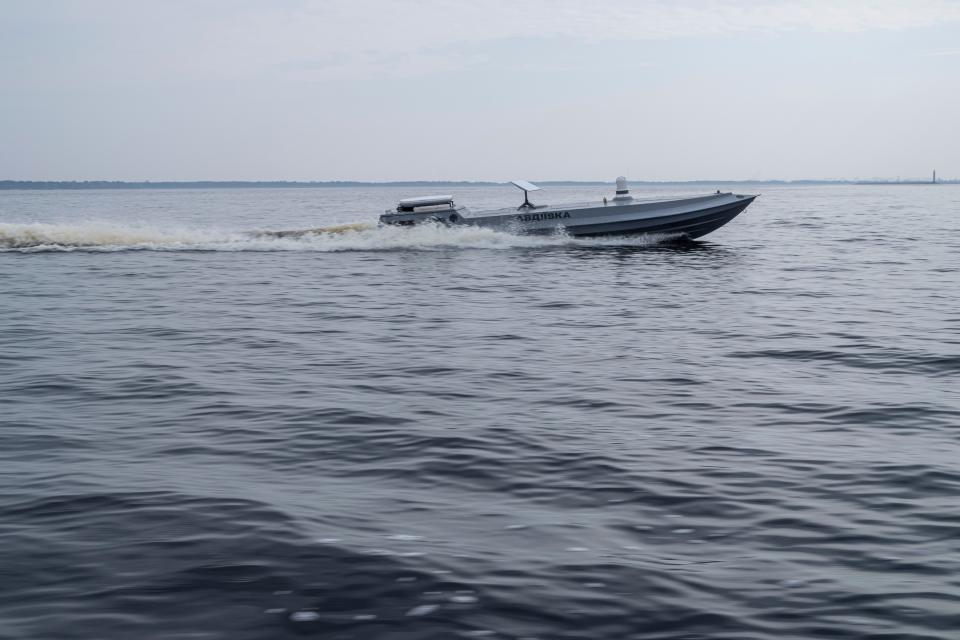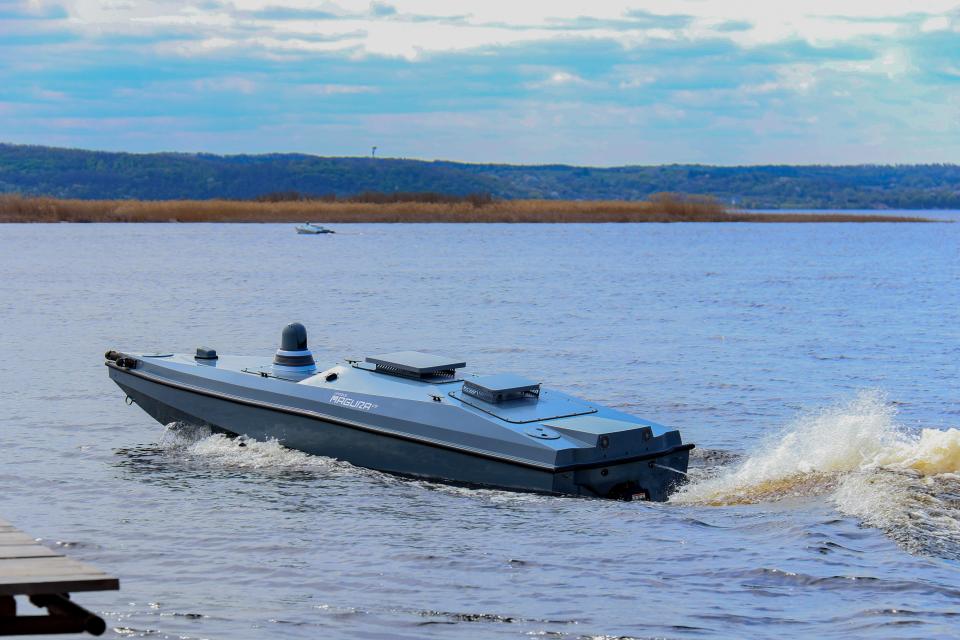-
Ukraine has used naval drones to damage and destroy ships of Russia’s Black Sea Fleet.
-
Russia has started using small FPV drones to train its sailors how to locate and defeat the threat.
-
It’s now having sailors operate these drones while rocking back and forth on swings to mimic waves.
Russia has consistently struggled to effectively protect its Black Sea Fleet from Ukraine’s arsenal of exploding naval drones, which Kyiv has used throughout the war in attacks targeting Moscow’s warships.
But a new video suggests Russia’s defense ministry is taking additional steps to defend its naval assets from the Ukrainian drones by putting sailors through a more realistic — albeit strange-looking — training process.
Zvezda News, a state-owned network run by Russia’s defense ministry, shared footage on Wednesday that showed Russian sailors rocking back and forth on swings while piloting first-person view, or FPV, drones above the waters of the Gulf of Finland.
In the video, a Russian naval drone, also known as an uncrewed surface vessel, or USV, can be seen on the surface of the water, supposedly mimicking the Ukrainian systems that have wreaked havoc on the Black Sea Fleet.
In a Telegram statement, Zvezda said that the swinging motion is meant to familiarize sailors with the waves. The channel said drones are in “great demand” among sailors and can “effectively combat” naval drones.
Russian military sailors are learning how to fly FPVs and quadcopters as counters to Ukrainian USVs – the sitting on a swing is supposed to mimic the motion of the waves so that operators can pilot these drones in bad weather. https://t.co/WivAYjES2s pic.twitter.com/ILkFbR1VI5
— Samuel Bendett (@sambendett) August 21, 2024
Ukraine claims to have sunk, damaged, or destroyed at least a third of the Black Sea Fleet since the start of the war, according to Britain’s defense ministry.
The Ukrainian military and security forces have used a combination of locally produced naval drones and anti-ship missiles during this successful campaign, which has forced the Black Sea Fleet to disperse from its headquarters in the occupied Crimean peninsula and relocate closer to Russia.
The naval drones — the main ones being the Sea Baby and Magura V5 — have been especially troublesome. Russia has taken some countermeasures to try and protect its warships, such as flying increased combat aircraft patrols, putting machine gun crews aboard its vessels, and adding more defenses in port.
Many of these labor-intensive efforts have been largely unsuccessful at curbing the threat. A more cost-effective solution for Russia to defeat Ukrainian drones could be to use its own drones.
Samuel Bendett, an advisor with the Center for Naval Analyses and an expert on drones and Russian defense issues, said Moscow has been using FPV drones in training to defeat Ukrainian naval drones for a while now.


“They’re basically refining the efforts of using the most advanced technologies to look for and destroy these drones,” Bendett, who pointed out the development in a post on X, told Business Insider.
While the FPV drones are cheap, attritable systems, Bendett said that they are far more dynamic than using a machine gun to simply destroy the inbound threat. Russia can use the FPV drones for a range of missions, including intelligence, surveillance, target acquisition, and reconnaissance purposes, in addition to threat elimination.
Using swings to mimic the motion of waves in adverse weather is a relatively new aspect of this training, Bendett said. However, the effectiveness of FPV drones may end up being quite limited in bad weather anyways because they’re small and light and would be vulnerable to strong winds and rains.
It’s not uncommon for Russia to put its soldiers through training like this. In fact, it’s a practice other militaries do as well. For example, US soldiers training to defeat FPV drones are doing so by shooting at balloons flapping in wind, which is supposed to mimic the unpredictable movement of an FPV drone in combat.
FPV drones strapped with various types of explosives have been an omnipresent threat on the battlefield in Ukraine, with both sides regularly using them to carry out precision strikes on enemy armor, positions, and troops.


“What we have is this application of technology that’s proven itself in ground combat. Now we have it applied on water and in maritime engagements,” Bendett said.
Bendett pointed out that in the Zvezda video of the counter-drone training, Russia is using a domestically produced naval drone to mimic a Ukrainian system. This gives sailors an even more realistic training environment, as opposed to simply placing an object in the water that’s only simulating a naval drone.
Little is known about Russia’s naval drone program, but these systems will likely be used beyond training scenarios.
“They obviously didn’t build it just so it can be a target for USVs,” Bendett said. “They built it for counter-USV operations, they built it for [intelligence, surveillance and reconnaissance] operations, they built it for possible combat operations — whatever that means to them and for them.”
Read the original article on Business Insider







